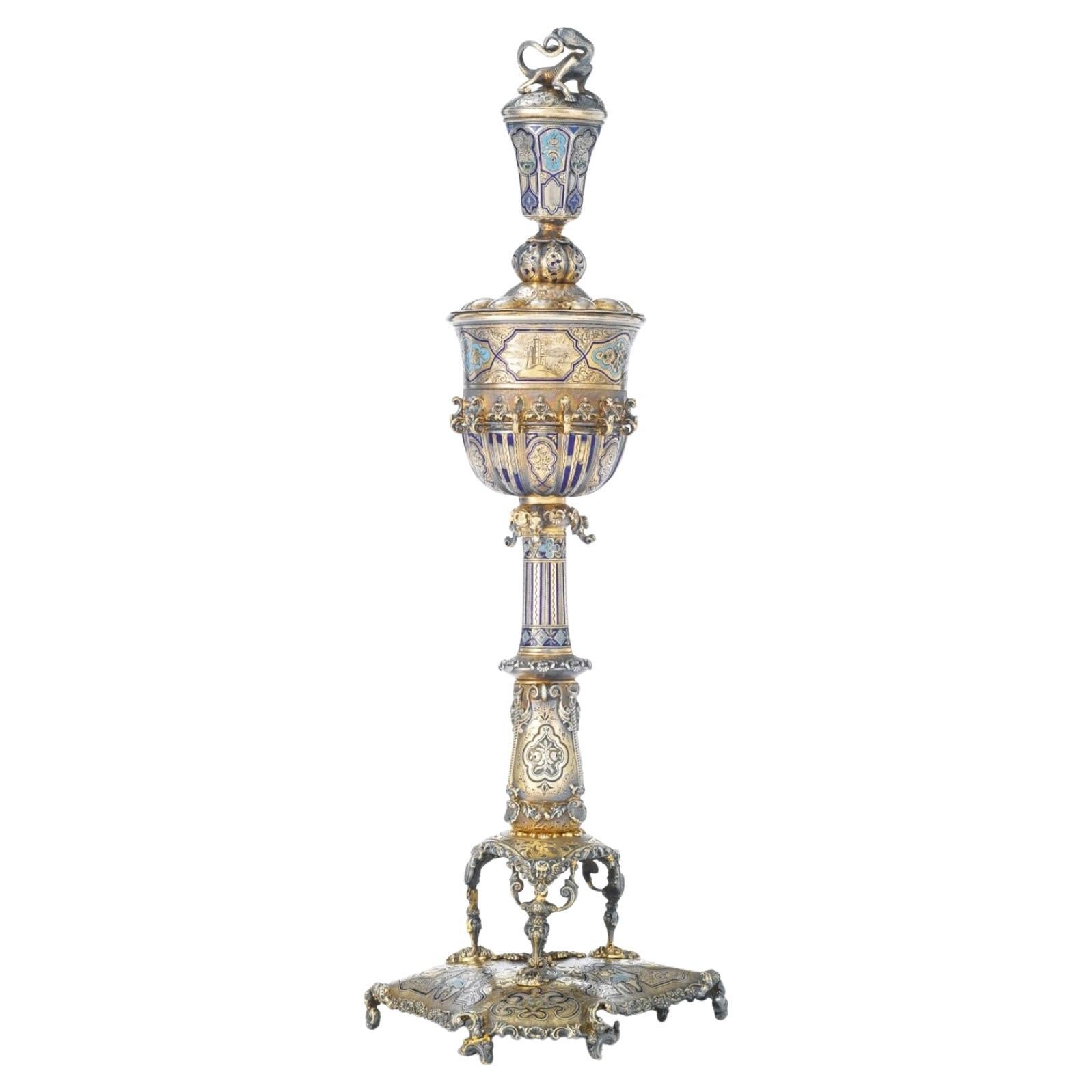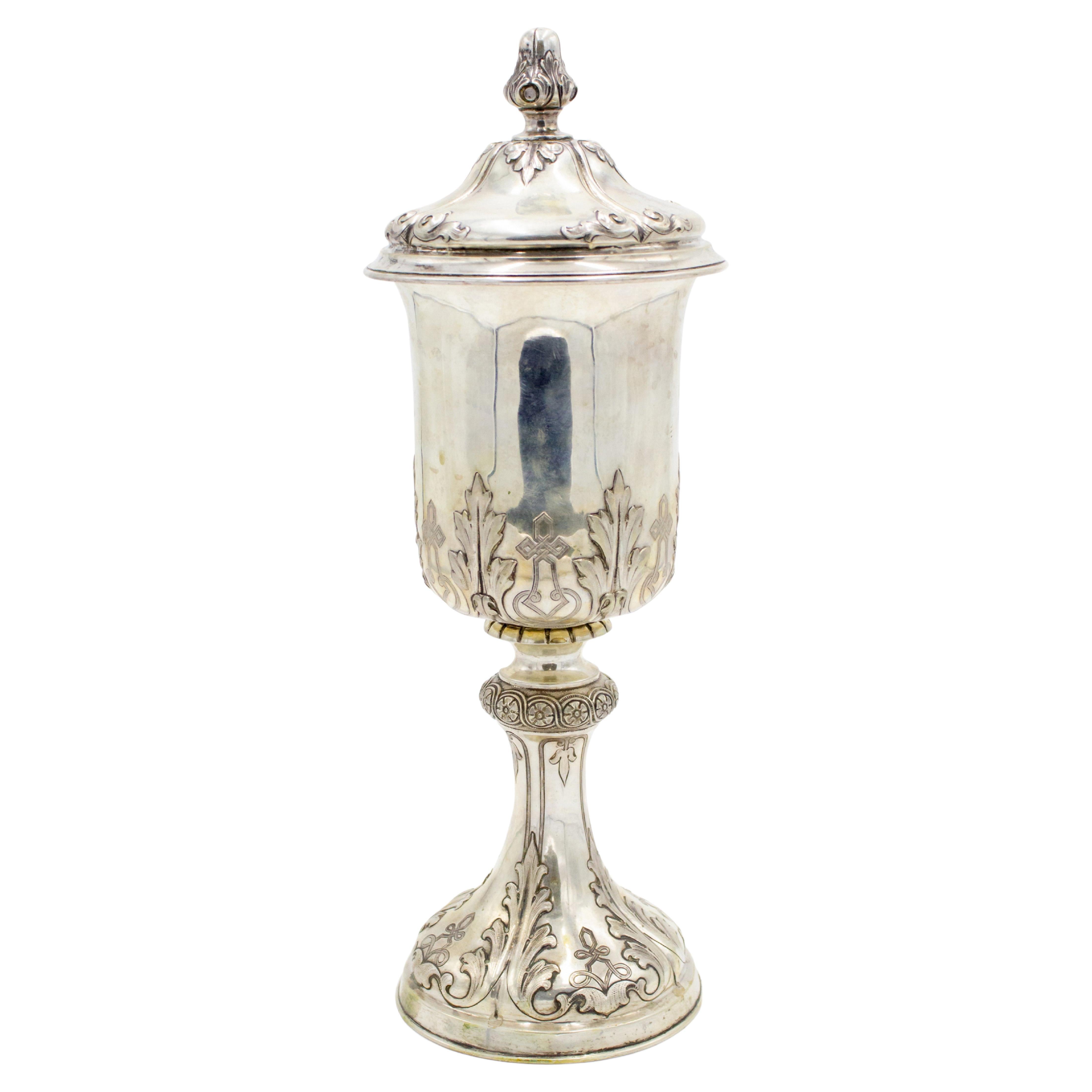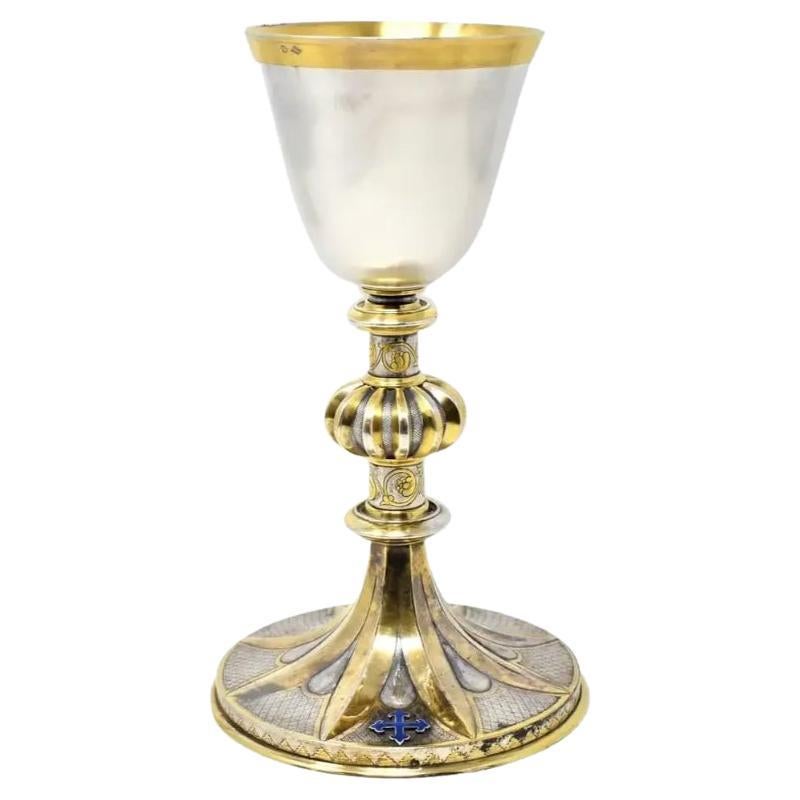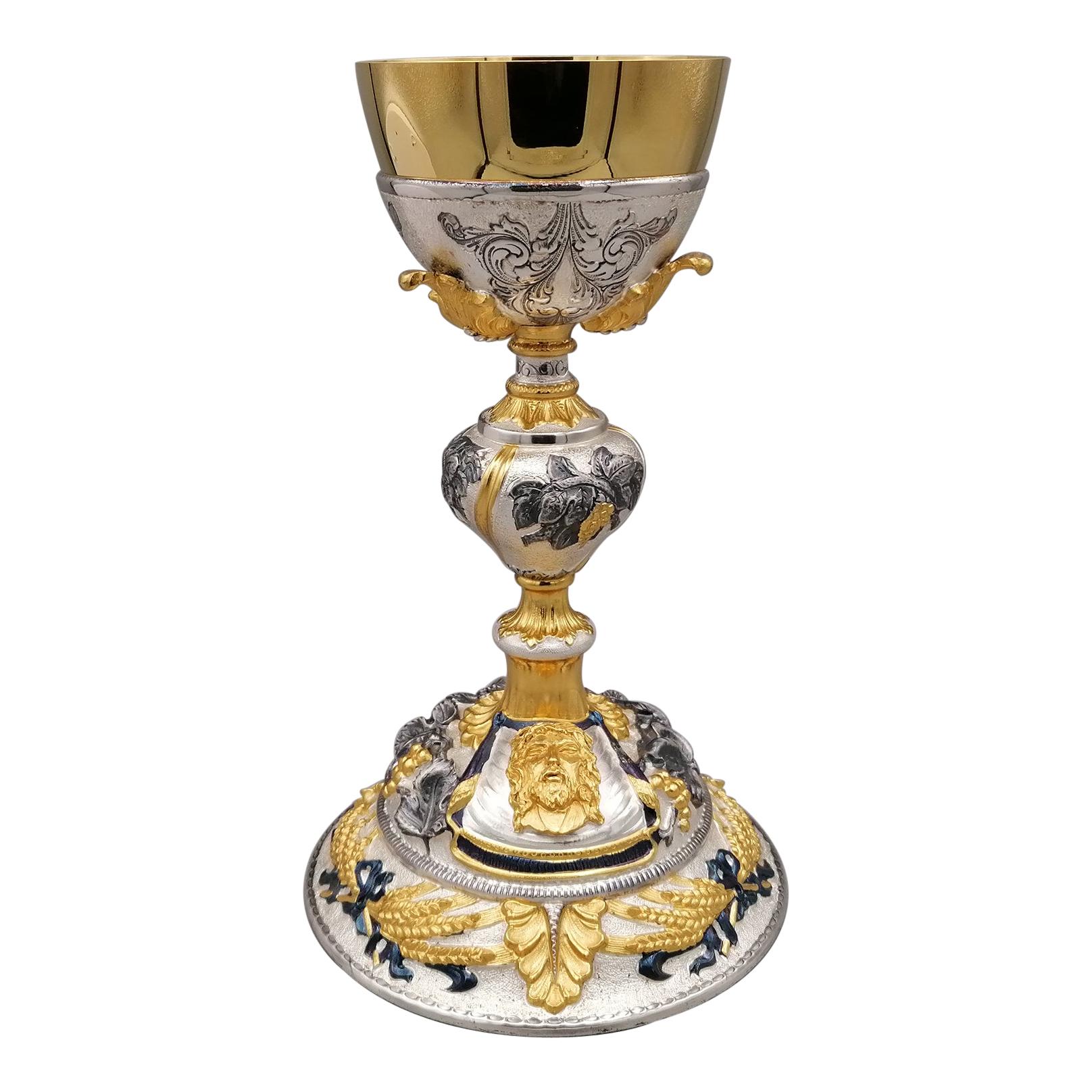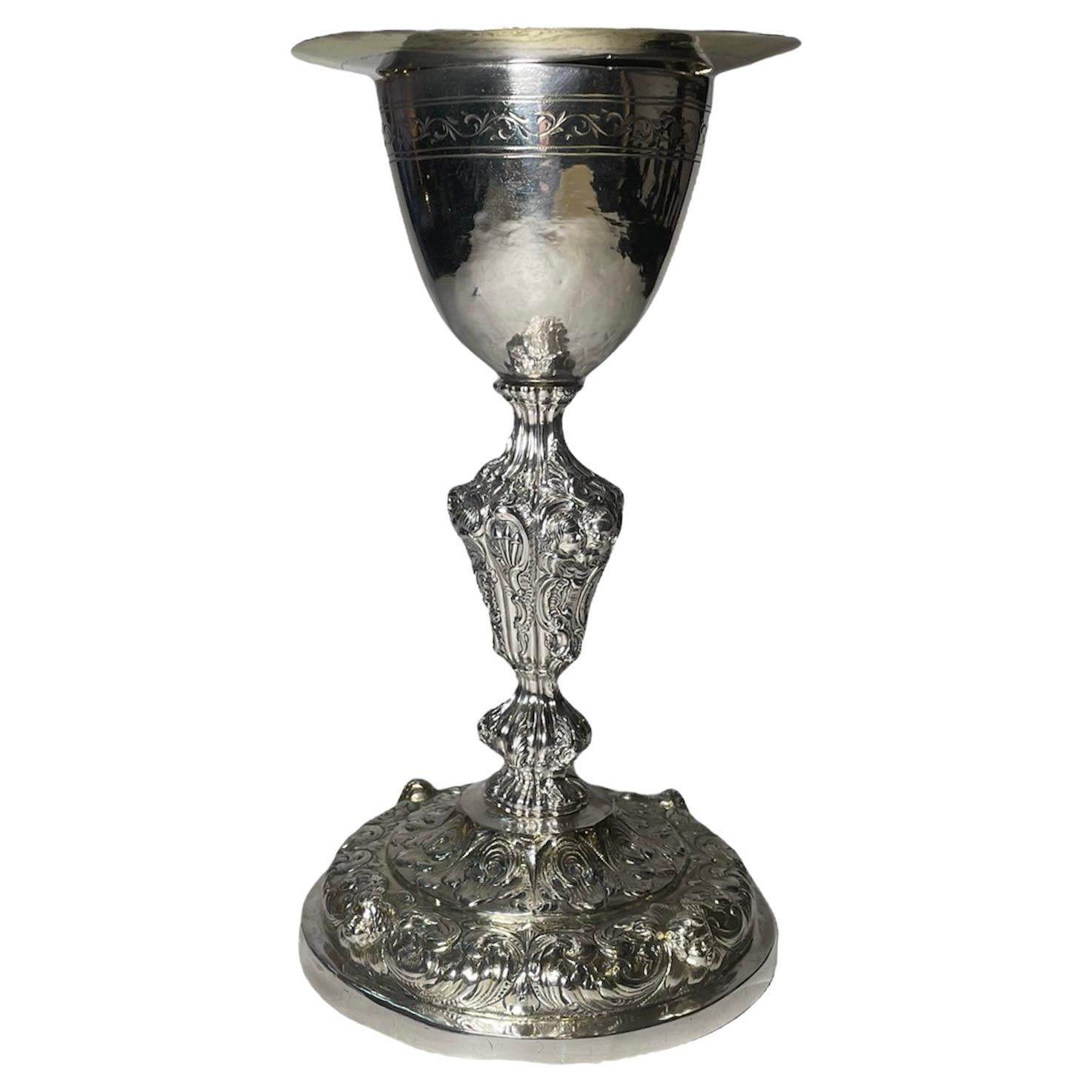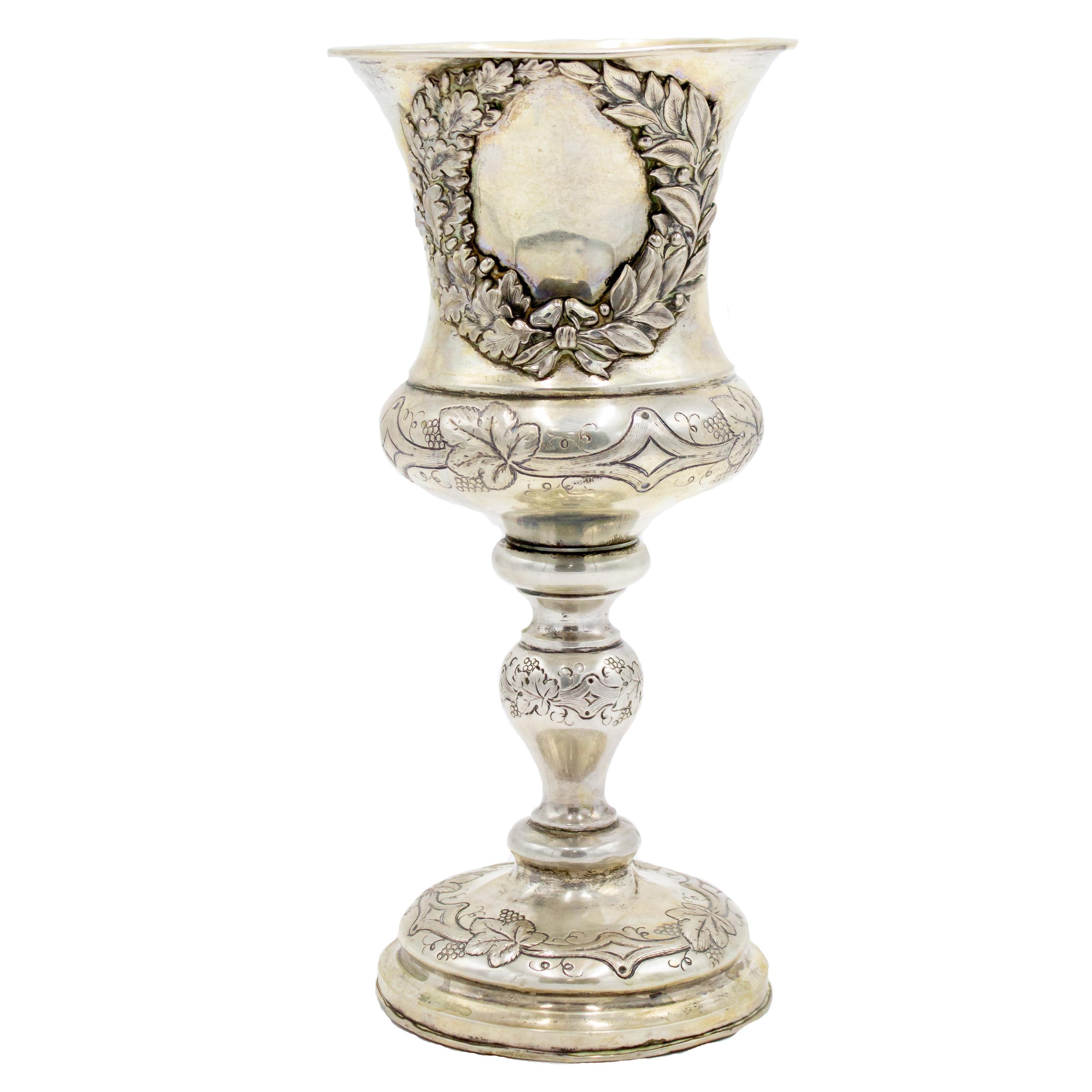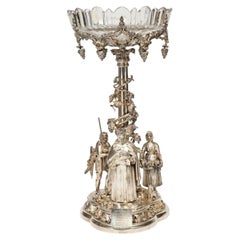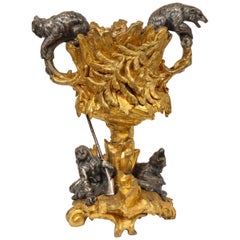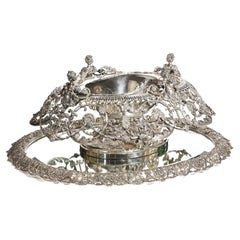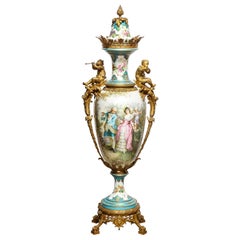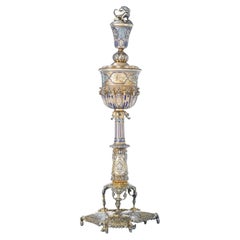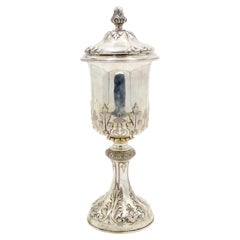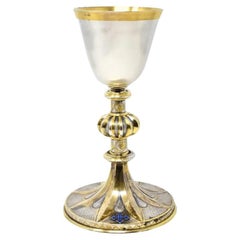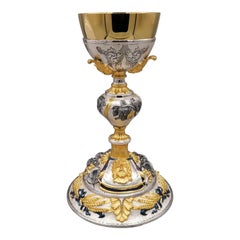Items Similar to A Rare and Exquisite Silver, Enameled Chalice by Jules Wièse and Froment-Meurice
Video Loading
Want more images or videos?
Request additional images or videos from the seller
1 of 8
A Rare and Exquisite Silver, Enameled Chalice by Jules Wièse and Froment-Meurice
$24,500
$35,00030% Off
£18,599.98
£26,571.4030% Off
€21,274.41
€30,392.0230% Off
CA$34,230.05
CA$48,900.0830% Off
A$38,071.29
A$54,387.5630% Off
CHF 19,879.64
CHF 28,399.4930% Off
MX$463,287.11
MX$661,838.7330% Off
NOK 253,893.40
NOK 362,704.8630% Off
SEK 238,107.22
SEK 340,153.1730% Off
DKK 158,779.09
DKK 226,827.2730% Off
Shipping
Retrieving quote...The 1stDibs Promise:
Authenticity Guarantee,
Money-Back Guarantee,
24-Hour Cancellation
About the Item
A Rare and Exquisite French Silver and Enameled Two-Compartment Chalice Cup by Jules Wièse for François-Désiré Froment-Meurice, circa 1850
This exceptional 19th-century chalice cup, crafted by master silversmith Jules Wièse under the patronage of the renowned François-Désiré Froment-Meurice, is a true testament to the ingenuity and artistry of French decorative arts.
The rim is elegantly engraved with intricate and evocative scenes of ports, capturing a maritime narrative with remarkable precision and depth. The chalice is supported by a finely detailed triform base, a motif that is harmoniously repeated below the baluster stem, showcasing a seamless blend of structural elegance and artistic harmony.
Crowning the piece is a lid surmounted by a sculptural covered vase, itself topped with a fantastical grotesque animal finial, a dramatic and imaginative flourish that exemplifies the innovative spirit of the era. The surface is adorned with exquisitely chased and engraved foliage, complemented by vibrant enameled bands and grounds rendered in sumptuous hues of cobalt blue and deep green, imparting a regal vibrancy and richness.
This rare chalice cup epitomizes the sophistication and opulence of the mid-19th-century French decorative arts. As a collaboration between Wièse and Froment-Meurice, it represents the pinnacle of their collective genius, making it an extraordinary addition to any discerning collection of fine silver and objets d'art.
14.5" high x 5" diameter
Very good condition, minor enamel loss, with hallmarks throughout. Nice chasing and engraving - presents well, a museum worthy object.
Jules Wiese and Froment-Meurice were prominent 19th-century French silversmiths, known for their exceptional craftsmanship and contributions to the decorative arts.
Jules Wiese (active 1820s-1860s) was a renowned French silversmith and designer. He became famous for his elaborate, high-quality works in the neoclassical and Renaissance Revival styles. Wiese is celebrated for producing ornamental pieces, particularly silverware and objets d'art, which often showcased intricate detailing, fine chasing, and a blend of classical motifs. His works were highly sought after, and he received commissions from aristocrats and collectors across Europe.
Froment-Meurice (founded 1830s) was a prestigious French silversmith company, established by the talented craftsman Jean-Valentin Morel and later taken over by the Froment family. The firm became known for producing extraordinary silver objects, including monumental silverware, candelabras, and elaborate ornamental pieces. Froment-Meurice earned international acclaim for its exquisite designs and the superior quality of its craftsmanship. They worked with notable patrons, including royalty and members of the French nobility.
Museums and Private Collections:
Both Wiese and Froment-Meurice’s works can be found in prestigious collections around the world:
Musée d'Orsay (Paris, France): This renowned museum holds a range of 19th-century decorative arts, including silversmith works from Froment-Meurice and Jules Wiese.
The Louvre Museum (Paris, France): The Louvre’s decorative arts section contains significant pieces from both silversmiths, showcasing the height of French craftsmanship.
The Metropolitan Museum of Art (New York, USA): The Met has a rich collection of 19th-century European silver, including works by Froment-Meurice, highlighting their opulent designs.
Victoria and Albert Museum (London, UK): The V&A boasts several pieces from the 19th century, including works by Froment-Meurice, known for their intricate detail and luxurious materials.
Private Collections: Many of their works are found in private collections of aristocratic families and prominent collectors, particularly in Europe, as their pieces were highly sought after by the elite of the 19th century.
These craftsmen are celebrated for their monumental contributions to the art of silversmithing, creating pieces that are prized both for their beauty and their historical significance.
- Creator:François-Désiré Froment-Meurice (Maker)
- Dimensions:Height: 14.5 in (36.83 cm)Diameter: 5 in (12.7 cm)
- Materials and Techniques:
- Place of Origin:
- Period:
- Date of Manufacture:C. 1850
- Condition:Wear consistent with age and use.
- Seller Location:Queens, NY
- Reference Number:1stDibs: LU1798242920062
About the Seller
5.0
Vetted Professional Seller
Every seller passes strict standards for authenticity and reliability
Established in 1980
1stDibs seller since 2016
63 sales on 1stDibs
Typical response time: 5 hours
- ShippingRetrieving quote...Shipping from: Queens, NY
- Return Policy
Authenticity Guarantee
In the unlikely event there’s an issue with an item’s authenticity, contact us within 1 year for a full refund. DetailsMoney-Back Guarantee
If your item is not as described, is damaged in transit, or does not arrive, contact us within 7 days for a full refund. Details24-Hour Cancellation
You have a 24-hour grace period in which to reconsider your purchase, with no questions asked.Vetted Professional Sellers
Our world-class sellers must adhere to strict standards for service and quality, maintaining the integrity of our listings.Price-Match Guarantee
If you find that a seller listed the same item for a lower price elsewhere, we’ll match it.Trusted Global Delivery
Our best-in-class carrier network provides specialized shipping options worldwide, including custom delivery.More From This Seller
View AllA Rare 1859 Elkington Silvered Bronze Victorian "Trophy" Centerpiece
By Elkington Mason & Co.
Located in Queens, NY
A Rare and Historic 1859 Elkington Silvered Bronze Victorian Centerpiece with Cut-Glass Bowl.
Presenting a magnificent Victorian silvered bronze centerpiece of unmatched rarity and importance, crafted by the renowned Elkington Mason & Co., Birmingham, in 1859. This exceptional work, complete with its original cut-glass bowl, epitomizes 19th-century British craftsmanship and artistry. Hallmarked to the base, this centerpiece showcases intricate sculptural details, embodying a high level of technical prowess and aesthetic refinement characteristic of Elkington's celebrated works.
The centerpiece's striking design features three meticulously rendered figures—a young hunter, a friar, and a fishmonger—each embodying elements of Victorian life and industry. At their feet, a loyal spaniel and various game highlight the naturalistic approach to the composition, enhanced by the masterful chasing and dynamic form. This sculptural ensemble rests on an elaborately decorated base, exuding both grandeur and narrative depth.
Adding profound historical value are two engraved plaques. The first, dated “January 28, 1859,” reads: “Presented to William Johnson Esq. as a token of respect & esteem by the workpeople in the employ of Messrs Richard Johnson & Brother, Manchester.” The second, an inscription from 1941, states: “Worshipful Company of Tin Plate Workers, Alias Wire Workers of the City of London, Presented by Arthur Laurence Johnson M.A., Grandson of William Johnson, both Wire Workers, with his Daughter Eleanor Morton Johnson, a Freeman of the Company, to commemorate his Mastership 1941-42.”
These inscriptions chart a rich lineage, connecting the Johnson family to pivotal moments in industrial history. William Johnson, alongside his brother Richard, assumed leadership of a wire-drawing firm in 1838, which would later become Richard Johnson & Nephew Ltd. Their contributions included providing galvanized armored wire for the historic 1857 transatlantic telegraph cable...
Category
Antique 19th Century British Victorian Centerpieces
Materials
Metal, Bronze
Important Ormolu and Silvered Bronze Figural Wine Cooler, Possibly Russian, 1860
By Pavel Sazikov
Located in Queens, NY
Important ormolu and silvered bronze figural wine cooler, possibly Russian, 1860
Gilt and silvered bronze wine cooler. Modeled with two Russian polar bears at the handles and with a young gunmen holding a rifle seated with a sea otter...
Category
Antique 19th Century Russian Wine Coolers
Materials
Bronze
Tiffany & Company, George Paulding Farnham, A Rare, Lavish Silver Centerpiece
By Tiffany & Co., Paulding Farnham.
Located in Queens, NY
Tiffany & Company and George Paulding Farnham, A rare, lavish and monumental sterling silver centerpiece with original mirrored-glass sterling silver plateau, circa 1900.
Museum quality.
In the George III style, designed by Paulding Farnham for Tiffany and Co, New York.
Of palatial and monumental size.
Centerpiece: 15" high x 30" wide x 27" deep
Plateau: 3" high x 39" wide x 34" deep
In excellent condition, ready to place.
Of oval form, the everted rims formed of openwork scrolling classical foliage and bellflower swags, the tops applied with standing scrolling foliage with four silver caryatid female figures, the bases overlaid with acanthus and palmettes. The original, silver mirrored plateau...
Category
Early 20th Century American American Classical Sterling Silver
Materials
Sterling Silver
$788,000 Sale Price
20% Off
Palatial French Ormolu-Mounted Sevres Porcelain Hand-Painted Vase and Cover
By Manufacture Nationale de Sèvres
Located in Queens, NY
A palatial french ormolu-mounted Sevres Porcelain hand-painted vase and cover, circa 1838.
This monumental Sevres porcelain vase stands 56" high, and is beautifully hand-painted with classical scenes of lovers and cupids, in teal / turquoise blue ground porcelain. Made with very fine quality figural bronze handle, the vase turns to a full 360 degree angle and is mounted on a solid bronze base with fine detail. Painted with beautiful flowers throughout the entire vase, leading up to the cover, which is adorned with an acorn bronze...
Category
Antique 19th Century French Napoleon III Vases
Materials
Bronze
$60,000 Sale Price
50% Off
Rare French Enameled Mamluk Revival Glass Mosque Lamp by Philippe Joseph Brocard
By Philippe-Joseph Brocard
Located in Queens, NY
A rare French enameled Mamluk Revival (Islamic) glass mosque lamp / lantern by Philippe-Joseph Brocard, late 19th century.
Measures: 14" high x 11" wide
Signed Brocard Paris.
...
Category
Antique Late 19th Century French Islamic Lanterns
Materials
Enamel
Exquisite Napoleon III French Ormolu Figural Basket Centerpiece, Circa 1880
By Alfred Emmanuel Louis Beurdeley
Located in Queens, NY
An exquisite Napoleon III French ormolu figural basket centerpiece, Circa 1880, Attributed to Alfred Emmanuel Louis Beurdeley.
Depicting four mercury-gilded bronze ormolu cherubs holding a basket, the base with trophies and scrolling.
This monumental centerpiece...
Category
Antique 19th Century French Napoleon III Centerpieces
Materials
Ormolu
You May Also Like
A Rare and Exquisite Silver, Enameled Chalice by Jules Wièse and Froment-Meurice
Located in Queens, NY
A Rare and Exquisite French Silver and Enameled Two-Compartment Chalice Cup by Jules Wièse for François-Désiré Froment-Meurice, circa 1850
This exceptional 19th-century chalice cup,...
Category
Antique 19th Century French Enamel Frames and Objects
Materials
Silver, Enamel
$24,500 Sale Price
30% Off
Free Shipping
Italian Renaissance Style Silver Chalice
Located in Queens, NY
Italian Renaissance-style (19th Century) silver chalice with cover and floral design.
Category
Antique 19th Century Renaissance Sterling Silver
Materials
Silver
Antique French 950 Silver Gilt Enamel Chalice by Placide Poussielgue-Rusand
Located in Long Island City, NY
An antique 19th century French solid .950 silver, gilt silver and enamel chalice. Marked in two places with French Minerva high grade silver hallmark ( ...
Category
Antique 19th Century French Sterling Silver
Materials
Silver
20st Century Italian Sterling Silver Chalice
By Arval Argenti Valenza
Located in VALENZA, IT
Large Liturgical Chalice in sterling silver.
The base is finely embossed with the face of Christ, grapes, vine leaves and ears.
The workmanship is h...
Category
1990s Italian Other Religious Items
Materials
Sterling Silver
$5,463 Sale Price
33% Off
Silver Repousse Chalice And Patten
Located in Guaynabo, PR
This is a Silver Chalice and Round Patten. It depicts a concave shaped cup adorned with an engraved garland of scrolls branches of leaves at the upper border. It is supported by a repousse stem decorated with cherubs’ faces, rocailles and scrolls of acanthus leaves. The round base also follows almost similar repousse pattern with cherubs’ faces and scrolls of acanthus leaves. Below the base is hallmarked...
Category
Early 20th Century Unknown Baroque Religious Items
Materials
Silver
19th Century Italian Renaissance Style Silver Chalice
Located in Queens, NY
Italian Renaissance-style (19th Century) silver chalice with wreath design.
Category
Antique 19th Century Renaissance Sheffield and Silverplate
Materials
Silver
More Ways To Browse
Arts Crafts Silver Enamel
Antique Chalice
Antique Chalices
Renaissance Cups
French Enamel Religious
Antique Curiosities Uk
Religious Chalice
Fin Jule
Silver Chalices
Wiese Jules
Gold Reliquary
Virgin Carving
Church Tabernacle
Menorah 19th Century
Russian Christ Icon
Antique Wooden Religious Statues
Bible Stands
Corpus Of Christ
